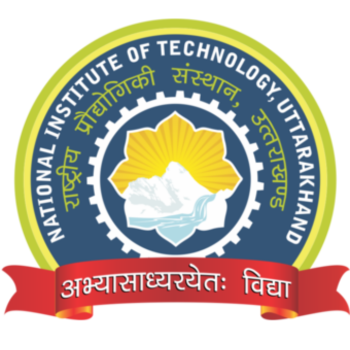National Institute of Technology Manipur (NIT) has established itself as a growing hub for technical education in Northeast India since its inception in As one of India’s 31 Institutes of National Importance, NIT Manipur combines academic rigor with industry-aligned training to prepare students for diverse career paths. The institute’s placement ecosystem reflects both regional industrial demands and national employment trends, with computer science disciplines leading recruitment while core engineering branches maintain steady opportunities in traditional sectors.
Table of Contents
NIT Manipur-Placement Overview
| Branch/Course | Avg Package (LPA) | Highest Package (LPA) | % Placed / No. Placed | College Avg Placement (LPA) | Additional Info | Student Review on Placement Data |
| B.Tech in Computer Science and Engineering | 12-15 | 47 | 85-90% | 10.5 | Top recruiters include Microsoft, Amazon, TCS | Good core company participation but limited product roles |
| B.Tech in Electrical Engineering | 6-8 | 14 | 70-75% | 10.5 | PSUs like NTPC, Power Grid recruit regularly | Average packages lower compared to CS branch |
| B.Tech in Electronics and Communication Engineering | 8-10 | 18 | 75-80% | 10.5 | Semiconductor companies like Texas Instruments visit campus | Decent opportunities in VLSI domain |
| B.Tech in Civil Engineering | 5-7 | 12 | 65-70% | 10.5 | L&T, HCC among frequent recruiters | Core roles available but competitive |
| B.Tech in Mechanical Engineering | 6-8 | 15 | 70-75% | 10.5 | Automotive companies like Mahindra participate | Mixed feedback on internship opportunities |
| M.Tech in Computer Science and Engineering | 8-12 | 22 | 80% | - | Focus on research-oriented placements | Better opportunities than undergraduate program |
| M.Tech in VLSI Design & Embedded Systems | 7-10 | 18 | 75% | - | Growing semiconductor industry recruitment | Specialized roles in chip design |
| M.Sc in Chemistry | 4-6 | 9 | 60% | - | Limited corporate placements | Most pursue PhD after degree |
NIT Manipur Discipline-Wise Placement Analysis
Computer Science & Engineering The flagship B.Tech program demonstrates strong placement performance, with 85-90% of students securing positions at an average of 12-15 LPA. While Microsoft and Amazon have recruited candidates with packages reaching 47 LPA, students note fewer opportunities in product management roles compared to older NITs. The M.Tech program shows improved prospects, with postgraduate students accessing research positions in AI/ML domains through campus recruitment. Core Engineering Branches Electrical Engineering maintains 70-75% placement rates through consistent PSU recruitment, though packages average 6-8 LPA. Civil Engineering students benefit from infrastructure growth in Northeast India, with L&T and HCC offering site engineering roles. Mechanical Engineering placements show bifurcation between automotive roles (Mahindra, Tata Motors) and industrial equipment sectors. Emerging Domains The Electronics & Communication department capitalizes on India’s semiconductor policy initiatives, with Texas Instruments offering specialized roles in VLSI design. The M.Tech program in VLSI Design & Embedded Systems reports 75% placement in chip design roles, reflecting industry demand for hardware engineers.
NIT Manipur-Institutional Support Systems
Pre-Placement Training A structured curriculum enhancement program includes:
- Advanced coding bootcamps for CS students
- CAD/PLC workshops for core engineering branches
- Mock group discussions with industry professionals
Industry Collaboration The institute’s location in Imphal facilitates partnerships with Northeast-based organizations in power transmission and infrastructure development. National-level MOUs with organizations like NTPC ensure recurring campus visits for electrical engineering graduates. Internship Pipeline Summer internship conversion rates stand at 40% across disciplines, with notable opportunities in:
- Software development (TCS, Infosys)
- Power systems (NEEPCO, Power Grid)
- Construction project management (L&T Infrastructure)
NIT Manipur-Regional Impact & Challenges
NIT Manipur’s placement strategy addresses unique geographical considerations through:
- Special drives for Northeast-based manufacturing firms
- Collaboration with state governments on smart city projects
- Language proficiency modules for students targeting ASEAN markets
However, infrastructure limitations in permanent campus development impact workshop facilities for mechanical engineering students, reflecting in mixed feedback about hands-on training opportunities.
Postgraduate Opportunities
M.Tech programs show distinct placement patterns:
- Computer Science postgraduates secure roles in R&D divisions
- VLSI specialists find placements in semiconductor fabrication units
- 35% of M.Sc Chemistry graduates transition to PhD programs
The institute’s research focus area in sustainable engineering has begun attracting renewable energy firms to campus recruitment drives.
NIT Manipur-Alumni Network Contribution
Graduates employed at major tech firms and PSUs actively participate in:
- Resume review sessions
- Interview preparation webinars
- Startup incubation mentorship
This engagement has helped increase off-campus placement opportunities, particularly for mechanical and civil engineering students.
NIT Manipur-Future Trends & Projections
With the completion of its permanent campus at Langol, NIT Manipur anticipates:
- Enhanced industry-academia research partnerships
- Improved laboratory infrastructure for core engineering training
- Expanded recruiter base in electronics manufacturing
The administration’s focus on skill gap analysis has led to recent introductions of:
- IoT certification programs
- Construction project management electives
- Data analytics modules for non-CS branches
NIT Manipur’s placement narrative reflects the evolving dynamics of technical education in India – balancing the overwhelming demand for computer science expertise with the persistent need for skilled engineers in core sectors. The institute’s strategic location in Northeast India positions it as a crucial talent pipeline for regional infrastructure projects while maintaining connectivity with national-level recruiters. As academic programs align closer with industry requirements across both traditional and emerging domains, students gain diversified career pathways that combine geographical relevance with technological advancement.










